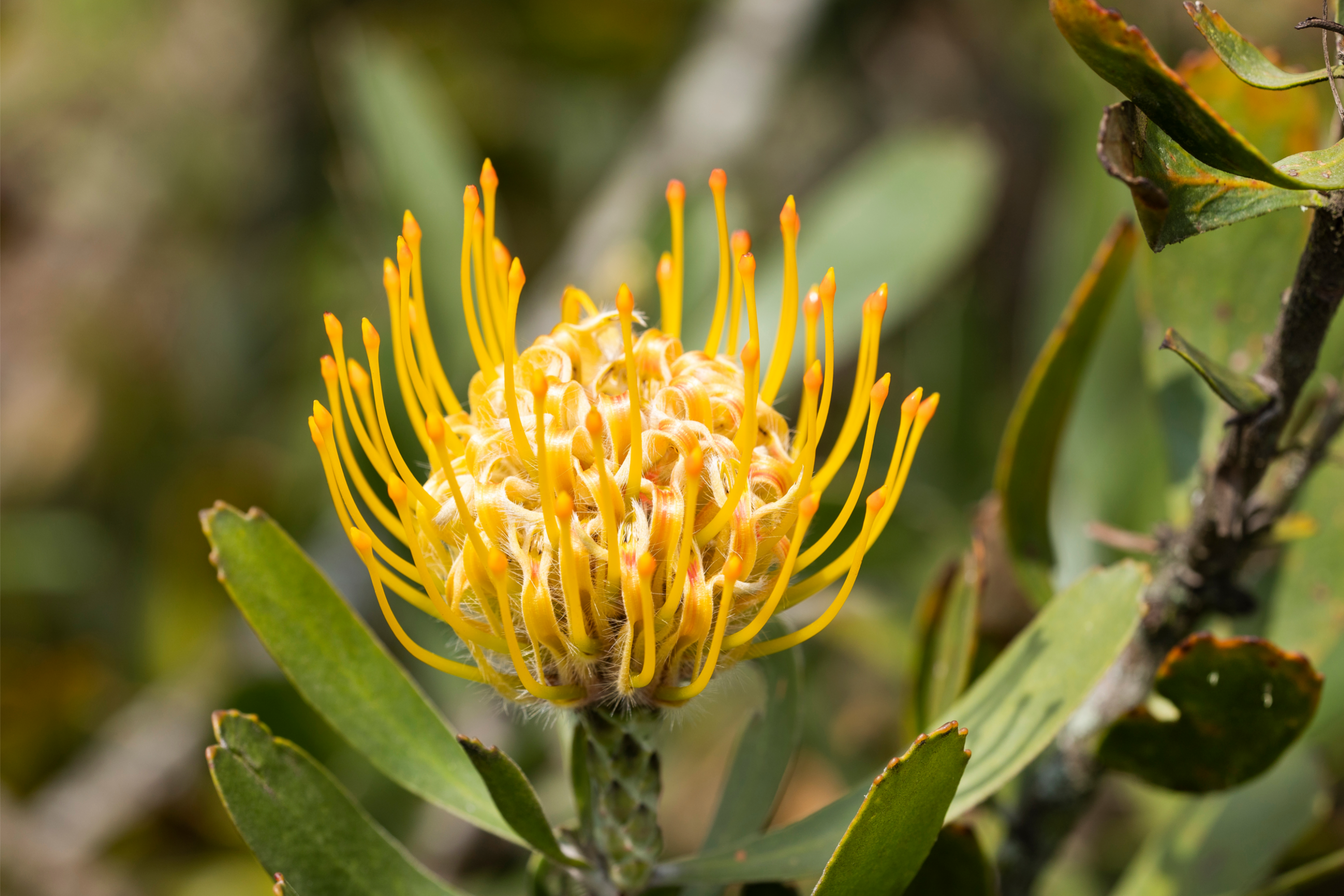Albertinia pincushion
(Leucospermum muirii)

Description
Leucospermum muirii is a rounded, upright, evergreen shrub of about 1½ m (5 ft) high, with a single trunk at its base, that is assigned to the Proteaceae. The flowering branches are 2–3 mm (0.079–0.118 in) thick and are initially grey due to a covering of fine crinkly hairs, which are soon lost. The very narrow spade-shaped leaves of about 5 cm (2 in) long and ¾ cm (0.3 in) wide carry three to seven teeth, and also quickly lose their soft layer of hairs. Its smallish globe-shaped flower heads of 2–3 cm (0.8–1.2 in) in diameter occur with one to four together, each on a stalk of 1–2 cm (0.4–0.8 in) long. It has pale to greenish yellow flowers, becoming orange with age, with some long hairs near their tips, from which straight styles stick out. This gives the flower head the likeness of a pincushion. It flowers from July till October and is pollinated by birds. It is called Albertinia pincushion in English and bloukoolhout in Afrikaans. It is an endemic species that can only be found near Albertinia in the very south of the Western Cape province of South Africa. Leucospermum muirii is an evergreen, rounded, upright shrub of about 1½ m (5 ft) high, branching from a central trunk. The flowering branches are slim, 2–3 mm (0.079–0.118 in) thick, which are initially covered with soft grey crinkly hairs, which are lost over time. The leaves a almost linear to very narrowly spade-shaped, 4–6 cm (1.6–2.4 in) long and 4–10 mm (0.16–0.39 in) wide with three to seven teeth near its tip, the surface at first with soft crisped hairs which are soon lost however.
Taxonomic tree:







